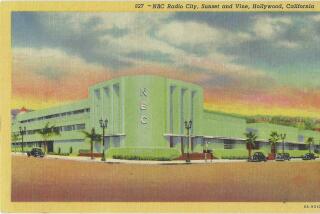TOM SNYDER: Making Broadcast History
- Share via
As the first licensed commercial television station west of the Mississippi River and the first to schedule its own programming, KTLA has made more than its share of broadcast history. Some of those moments will be replayed Wednesday during “KTLA at 45: A Salute to Los Angeles Television.”
The two-hour special includes footage from many of the station’s popular early shows along with its coverage of major news events, such as its 27-hour live broadcast of the failed rescue attempt in 1949 of 3 1/2-year old Kathy Fiscus from a well at what is now San Marino High School and coverage of the 1952 atomic bomb test.
“KTLA at 45: A Salute to Los Angeles Television” is hosted by five former or current station personalities--Steve Allen, Stan Chambers, Stephanie Edwards, Hal Fishman and Tom Snyder.
Snyder, best known for hosting NBC’s “The Tomorrow Show” from 1973 to ’82 and anchoring the news at KNBC from 1970 to ‘74, was a reporter at KTLA from 1963 to ’65. He is now the host of a national radio talk show, heard locally on KGIL-AM.
Snyder discussed his days at KTLA and the state of local news with Times Staff Writer Steven Herbert.
What kind of memories did this bring back for you?
Working at KTLA was my first exposure to really major market television news. I came to KTLA from a station in Georgia. Coming to KTLA was like going to graduate school in broadcast news for me. I was 26 years old.
Why was and is KTLA able to do so many special things?
Because it’s an independent station that doesn’t have a network schedule. So if something happens, they push a button and they’re on the air with whatever it is they want to do, whether it’s the flood, the trial of the four men accused of beating Rodney King, the Bel-Air fire, the Baldwin Hills dam disaster.
There wasn’t that much on in early KTLA days and interrupting was a plus. When I worked at KTLA, independent TV was vastly different from what it is today. There were no satellite dishes, reruns of “The Cosby Show,” first-run syndication, first-run movies in release. The only programs we had were programs that were produced there: “Popeye and Friends,” Dorothy Gardner, “Bowling for Dollars,” all those crazy and sometimes bad shows--and Charlie Chan movies--were all that independent television had. If a big news event broke out, it was to KTLA’s advantage to leave its regular programming schedule and go to breaking events.
Are local newscasts better today than in the early 1970s?
I think they’re terrible.
My last run with the local news was with (WABC’s) “Eyewitness News” in New York. On one particular occasion I heard a producer discuss the methodology of covering a story and I asked why are we doing it that way. He said, “Our object is to fool the viewer.”
I said, “If we’re in the business of reporting news, and talking about fooling the viewer, we’re in trouble here.”
I don’t watch much local news, but what I see is not news, with the exception of the floods and the Rodney King affair. When you get to local politics and local issues, good Lord, we used to run two, 2 1/2 minutes a night of the L.A. City Council deliberating important matters.
Now most sound bites I see run 10 seconds and the rest is explained very quickly in the copy read by the anchors. I don’t know if that’s bad, but it doesn’t seem to offer a lot of information.
What are the biggest changes in local news over the past 20 years?
The rise of feature material. TV news programs have become more than that. They’ve almost become afternoon variety shows. They cover the news quickly, then they move on to the departments like the consumer department, the sports department.
There are some good things that are happening in local news. There’s a lot more sensitivity to women in the workplace, which wasn’t there when I was there. There’s a lot more sensitivity to ethnic neighborhoods, which wasn’t part of our coverage when I was there.
The overwhelming change that’s taken place since I left KNBC is that the ratings have become terribly, terribly important. They were important when I was there, but nothing as they are now.
Do you ever see yourself becoming a local news anchor again?
No, I don’t. I think I’m too old for the job. My hair is getting gray, my chin is getting loose and I’m not looking to go to a cosmetic surgeon. I don’t think I have the stamina for it, and I certainly don’t have the aptitude for it. I did not have a happy experience the last time around at WABC in New York.
It’s passed to a new generation, my friend. These are all yuppies. Without in any way indicting them, they see it different from those of us who did it then saw it. We really saw it as a mission, we really saw it as a big responsibility, to get it right and not overdramatize it.
What is it that you like about radio?
It’s live, it’s me and me alone, and not format-driven. There is a bond between the listener and the radio broadcaster that does not exist between the viewer and the television broadcaster.
These are people who, in many cases, have no one to tell it to. They call us because, in many cases, no one else will listen to them and we will. Talk radio has become the national town meeting because television and the news centers of New York and Washington have isolated themselves, as has our representation.
“KTLA at 45: A Salute to Los Angeles Television” airs at 8 p.m. Wednesday.





